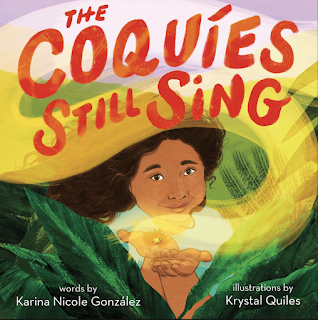With summer around the corner, it’s time to get excited for those long, sunny days that are perfect for writing. But no school means you’re going to have a full house of kids, and finding a balance between writing and family time can be a bit tricky. So, in this article, I want to share a few tips and tricks that I’ve learned from my peers to stay focused on writing while still being present with family.
Create a Schedule by Joining an Online Co-Workspace
When it comes to maximizing productivity, establishing a schedule is your greatest ally. One effective way to achieve this is by joining an online co-working community. By becoming part of such a community, you can access the benefits of a structured routine and efficient time management. Personally, I have found that participating in an online co-working space that starts early in the day has significantly helped me accomplish my writing goals.
By joining an online co-working space, you can allocate specific time slots for your writing sessions, allowing you to establish a consistent routine, eliminate procrastination, and boost your motivation. Additionally, online co-working provides a supportive community of like-minded writers. A few groups are:
1. One of the SCBWI co-working sessions is hosted by Laura Fisk. This session is held once a month. The next session will be on June 28th, 2023, 9:30 AM -11 AM EST. You can email austin-ic@scbwi.org
2. Write 30: By Author Chitra Soundar. This writing session is good for getting your creative juices flowing. The session is every Friday at 10:00 AM EST. You can email chitra@chitrasoundar.com
3. Shut Up & Write: You have to find an event that suits your time and join.
4. 5am writing community: You wake up early and start writing at 5:00 Am. All you have to do is Tweet with the hashtag #5amWritersClub. They do not meet virtually every day but once a month Ralph Walker hosts a Virtual Donut party. You can email rwalker12813@gmail.com.
5. Focusmate: It’s not specifically for writers. If you find a session that fits your needs, click on it to reserve a spot. You will be paired with another Focusmate user for the session.
Set Goals and Deadlines
What do you want to accomplish this summer? Write down your goals and establish deadlines for when you wish to achieve them. If you're working on a novel, having a target word count for each writing session can significantly boost your productivity, allowing you to free up more time for your family. As a picture book author, creating a well-structured weekly schedule helps me allocate dedicated time for writing, revising, researching, and other important activities related to my craft. Throughout the week, I track my progress using a planner and celebrate each milestone I achieve. Remember, regular evaluation of your progress enables you to make necessary adjustments to your goals.
Take advantage of the Summer Reading Programs
Sometimes you just need a quiet house to get focused. Take full advantage of the Summer Reading Programs to create a calm and focused atmosphere for your writing. Encouraging your kids to participate in the summer reading programs at your local library offers you precious hours of uninterrupted work time. By coordinating your writing sessions with your children's reading time, you can have uninterrupted time for your creative work. While your children are engrossed in their own reading adventures, you'll have the dedicated space and time you need to focus on your writing.
I hope following these quick and easy tips you can make this summer both productive and joyful with your family.
Shachi Kaushik is a writer and a storyteller. Part of the children's media industry, she creates content for children that is entertaining, enlightening, and educational. She is currently working on the YouTube Original Animated Series "The Guava Juice Show." In the past, Shachi has hosted Bilingual Hindi-English Storytime for children at the Round Rock Public Library. She has also been awarded Mentor of the Year 2019 from Mentorship Award Round Rock Independent School District. Her articles have also appeared in Austin Family, Brown Girl Magazine, and Austin South Asian. Raised in India, Shachi currently lives in Vancouver with her husband. Please visit her at https://storiesbyshachi.com
With summer around the corner, it’s time to get excited for those long, sunny days that are perfect for writing. But no school means you’re going to have a full house of kids, and finding a balance between writing and family time can be a bit tricky. So, in this article, I want to share a few tips and tricks that I’ve learned from my peers to stay focused on writing while still being present with family.
Create a Schedule by Joining an Online Co-Workspace
When it comes to maximizing productivity, establishing a schedule is your greatest ally. One effective way to achieve this is by joining an online co-working community. By becoming part of such a community, you can access the benefits of a structured routine and efficient time management. Personally, I have found that participating in an online co-working space that starts early in the day has significantly helped me accomplish my writing goals.
By joining an online co-working space, you can allocate specific time slots for your writing sessions, allowing you to establish a consistent routine, eliminate procrastination, and boost your motivation. Additionally, online co-working provides a supportive community of like-minded writers. A few groups are:
1. One of the SCBWI co-working sessions is hosted by Laura Fisk. This session is held once a month. The next session will be on June 28th, 2023, 9:30 AM -11 AM EST. You can email austin-ic@scbwi.org
2. Write 30: By Author Chitra Soundar. This writing session is good for getting your creative juices flowing. The session is every Friday at 10:00 AM EST. You can email chitra@chitrasoundar.com
3. Shut Up & Write: You have to find an event that suits your time and join.
4. 5am writing community: You wake up early and start writing at 5:00 Am. All you have to do is Tweet with the hashtag #5amWritersClub. They do not meet virtually every day but once a month Ralph Walker hosts a Virtual Donut party. You can email rwalker12813@gmail.com.
5. Focusmate: It’s not specifically for writers. If you find a session that fits your needs, click on it to reserve a spot. You will be paired with another Focusmate user for the session.
Set Goals and Deadlines
What do you want to accomplish this summer? Write down your goals and establish deadlines for when you wish to achieve them. If you're working on a novel, having a target word count for each writing session can significantly boost your productivity, allowing you to free up more time for your family. As a picture book author, creating a well-structured weekly schedule helps me allocate dedicated time for writing, revising, researching, and other important activities related to my craft. Throughout the week, I track my progress using a planner and celebrate each milestone I achieve. Remember, regular evaluation of your progress enables you to make necessary adjustments to your goals.
Take advantage of the Summer Reading Programs
Sometimes you just need a quiet house to get focused. Take full advantage of the Summer Reading Programs to create a calm and focused atmosphere for your writing. Encouraging your kids to participate in the summer reading programs at your local library offers you precious hours of uninterrupted work time. By coordinating your writing sessions with your children's reading time, you can have uninterrupted time for your creative work. While your children are engrossed in their own reading adventures, you'll have the dedicated space and time you need to focus on your writing.
I hope following these quick and easy tips you can make this summer both productive and joyful with your family.








.jpg)










